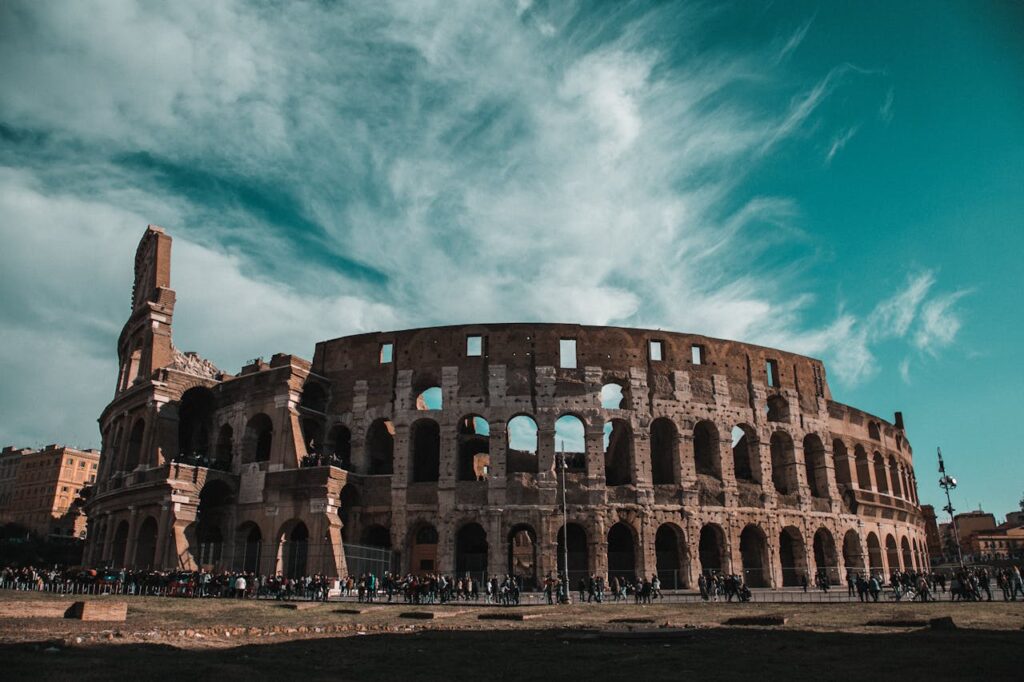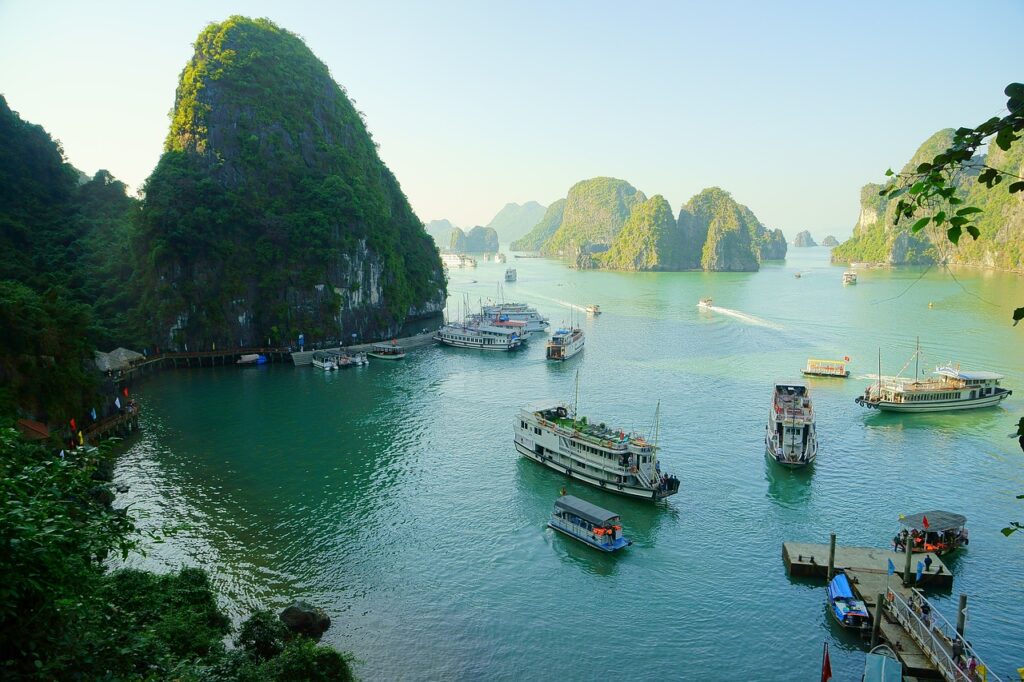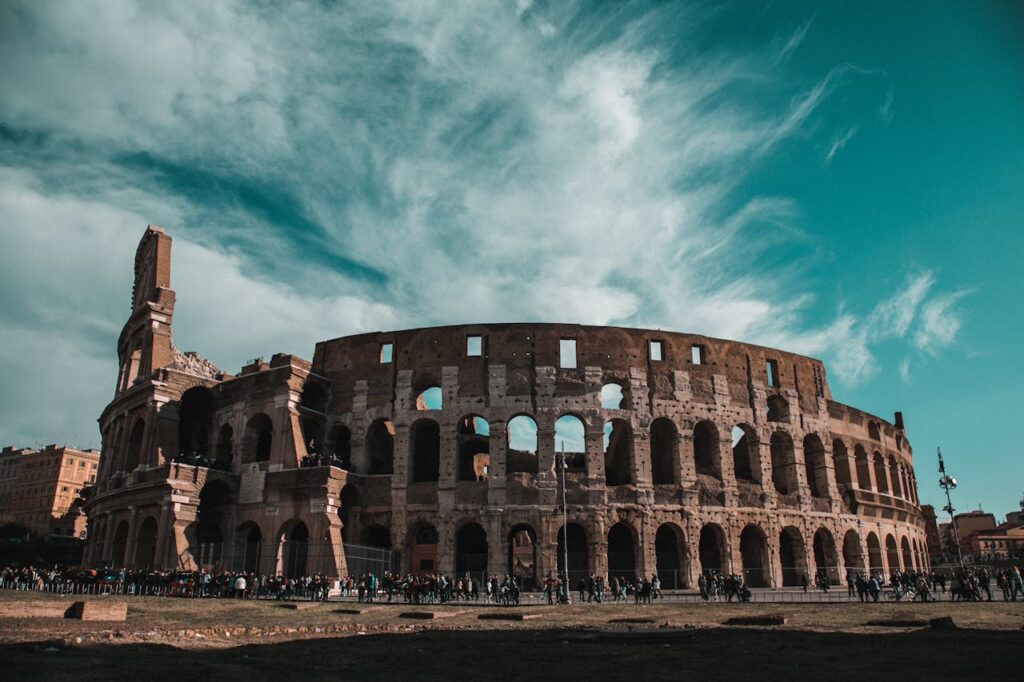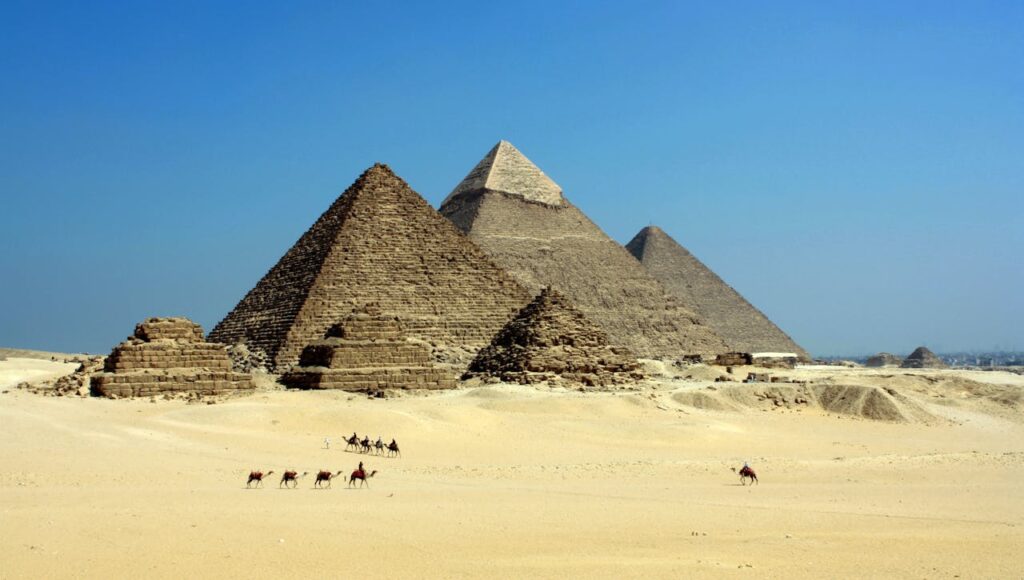Roman amphitheaters were the epicenters of entertainment in ancient Rome, hosting brutal gladiator fights, wild animal hunts, and grand spectacles that reflected the Roman Empire’s values of power, strength, and spectacle. The term amphitheater, derived from the Greek words “amphi” meaning “around” and “theatron” meaning “place for viewing,” aptly describes these massive, oval-shaped structures designed to hold tens of thousands of spectators.
Here are 11 of the most famous Roman amphitheaters that have survived the test of time, showcasing the architectural brilliance and cultural significance of ancient Rome.
1. Uthina Amphitheater: Tunisia’s Hidden Gem

Uthina Amphitheater is located in the ancient Roman colony of Uthina (modern-day Tunisia). Situated on the main route to Carthage, this amphitheater could accommodate around 16,000 visitors. The lower half of the structure is dug into a hill, while the upper arches rise above the ground. The site, still under excavation, offers a glimpse into Tunisia’s rich Roman past, although it remains relatively unknown to tourists.
| Travel Information | Details |
|---|---|
| Location | Uthina, Tunisia |
| Seating Capacity | 16,000 |
| Current Condition | Partially reconstructed |
| Nearby Attractions | Carthage, Tunis Medina |
| Open Time | 8:00 AM |
| Close Time | 5:00 PM |
2. Pozzuoli Amphitheater: Italy’s Subterranean Wonder

The Pozzuoli Amphitheater is one of Italy’s largest Roman amphitheaters, with a capacity of over 20,000 spectators. Construction began under Emperor Vespasian, who also initiated the building of the Colosseum in Rome. Although much of the upper seating has been lost, the subterranean areas, including animal cages and mechanisms, are exceptionally well-preserved.
| Travel Information | Details |
|---|---|
| Location | Pozzuoli, Italy |
| Seating Capacity | 20,000 |
| Current Condition | Subterranean areas well-preserved |
| Nearby Attractions | Solfatara, Rione Terra |
| Open Time | 9:00 AM |
| Close Time | 6:00 PM |
3. Leptis Magna Arena: The Desert Jewel of Libya

Leptis Magna Arena, located in present-day Libya, was founded by the Phoenicians and later became a major Roman trading post. The arena, built in 56 AD, could seat 16,000 spectators and is one of the few Roman amphitheaters built below ground level. After being abandoned in 523 AD, the city and its amphitheater were reclaimed by the desert, preserving its structures remarkably well.
| Travel Information | Details |
|---|---|
| Location | Leptis Magna, Libya |
| Seating Capacity | 16,000 |
| Current Condition | Well-preserved |
| Nearby Attractions | Leptis Magna Ruins, Sabratha |
| Open Time | 8:00 AM |
| Close Time | 4:00 PM |
4. Roman Arena in Arles: France’s Historical Spectacle

The Roman Arena in Arles is a prominent tourist attraction in southern France. Built in the 1st century BC, this amphitheater could host over 20,000 spectators. The arena has been repurposed over the centuries and is currently used for bullfighting, a tradition that has persisted since Roman times.
| Travel Information | Details |
|---|---|
| Location | Arles, France |
| Seating Capacity | 20,000 |
| Current Condition | Well-preserved |
| Nearby Attractions | Arles Amphitheater, Van Gogh Museum |
| Open Time | 9:00 AM |
| Close Time | 7:00 PM |
5. Amphitheatre Nîmes: Gaul’s Roman Marvel

Amphitheatre Nîmes, located in present-day France, was constructed at the end of the 1st century AD to accommodate 24,000 spectators. During the Middle Ages, a fortified palace and a small neighborhood developed within its walls. Today, the amphitheater is used for bullfights and other public events, maintaining its historical connection to spectacle and entertainment.
| Travel Information | Details |
|---|---|
| Location | Nîmes, France |
| Seating Capacity | 24,000 |
| Current Condition | Well-preserved, used for events |
| Nearby Attractions | Maison Carrée, Nîmes Cathedral |
| Open Time | 9:00 AM |
| Close Time | 6:00 PM |
6. Pompeii Spectacula: The Oldest Roman Amphitheater

Pompeii Spectacula, built around 70 BC, is the oldest surviving Roman amphitheater. Capable of seating 20,000 spectators, it was the site of gladiatorial games and violent riots. The eruption of Mount Vesuvius in 79 AD buried the city of Pompeii in ash, preserving the amphitheater and surrounding structures in remarkable condition.
| Travel Information | Details |
|---|---|
| Location | Pompeii, Italy |
| Seating Capacity | 20,000 |
| Current Condition | Exceptionally well-preserved |
| Nearby Attractions | Mount Vesuvius, Pompeii Ruins |
| Open Time | 8:30 AM |
| Close Time | 7:30 PM |
7. Pula Arena: Croatia’s Best-Preserved Amphitheater

The Pula Arena in Croatia is the sixth largest and one of the best-preserved Roman amphitheaters. Built around the 1st century AD, it could seat over 26,000 spectators. Although some stones were removed in the 15th century for local construction, the structure remains largely intact and is used for festivals and performances today.
| Travel Information | Details |
|---|---|
| Location | Pula, Croatia |
| Seating Capacity | 26,000 |
| Current Condition | Well-preserved |
| Nearby Attractions | Temple of Augustus, Pula Cathedral |
| Open Time | 9:00 AM |
| Close Time | 7:00 PM |
8. Verona Arena: Italy’s Roman Masterpiece

The Verona Arena is the third-largest Roman amphitheater still in existence and is known for its excellent preservation. Built in 30 AD, the arena could hold 30,000 spectators. Despite losing most of its outer ring during a major earthquake in 1117, the inner structure remains largely intact and continues to host opera performances and other events.
| Travel Information | Details |
|---|---|
| Location | Verona, Italy |
| Seating Capacity | 30,000 |
| Current Condition | Well-preserved |
| Nearby Attractions | Juliet’s House, Piazza delle Erbe |
| Open Time | 8:30 AM |
| Close Time | 6:30 PM |
9. Amphitheater of El Djem: Tunisia’s Grand Arena

The Amphitheater of El Djem in Tunisia is the third-largest Roman amphitheater, with a seating capacity of 35,000 spectators. Built in the early 3rd century AD, it remained in good condition until the 17th century when stones were removed for local construction. The amphitheater was also used in the filming of the Oscar-winning film “Gladiator” and is now a popular tourist destination.
| Travel Information | Details |
|---|---|
| Location | El Djem, Tunisia |
| Seating Capacity | 35,000 |
| Current Condition | Well-preserved, partially damaged |
| Nearby Attractions | El Djem Museum, Sbeitla Ruins |
| Open Time | 8:00 AM |
| Close Time | 5:30 PM |
10. Colosseum: Rome’s Iconic Amphitheater

The Colosseum in Rome is the largest and most famous amphitheater of the Roman Empire. Its construction began under Emperor Vespasian in 72 AD and was completed by his son Titus in 80 AD. The Colosseum could hold 50,000 spectators, who entered through 80 entrances. This iconic structure is a must-visit for anyone touring Rome and stands as a testament to the grandeur of ancient Roman architecture.
| Travel Information | Details |
|---|---|
| Location | Rome, Italy |
| Seating Capacity | 50,000 |
| Current Condition | Well-preserved |
| Nearby Attractions | Roman Forum, Palatine Hill |
| Open Time | 8:30 AM |
| Close Time | 7:00 PM |
11. Amphitheater of Trier: Germany’s Ancient Wonder

The Amphitheater of Trier in Germany was built in the 2nd century AD and could accommodate around 20,000 spectators. Trier, once a major Roman city, used this amphitheater for gladiator contests and public executions. The amphitheater is remarkably well-preserved and is part of the Roman Monuments, Cathedral of St. Peter, and Church of Our Lady UNESCO World Heritage Site.
| Travel Information | Details |
|---|---|
| Location | Trier, Germany |
| Seating Capacity | 20,000 |
| Current Condition | Well-preserved |
| Nearby Attractions | Porta Nigra, Cathedral of Trier |
| Open Time | 9:00 AM |
| Close Time | 6:00 PM |








